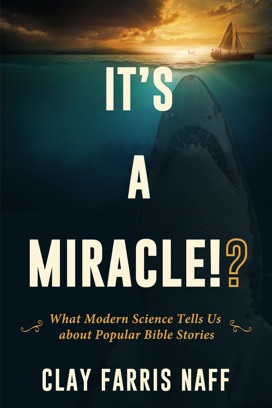About the Book


Fundamentalist Christians often use the Bible as a guide to the natural world, which inevitably leads them to reject much of what modern science says about the universe. But what if we were to use modern science as a guide to the Bible? What might a scientific reading of the Bible tell us not only about religion's claims, but also about nature and our place in it? If God really did part the Red Sea, how might he have engineered such a feat? If Jesus really did raise Lazarus from the dead, under what circumstances might it have happened? In this witty and informative book, science writer Clay Farris Naff brings the miracles of the Bible into sharp focus through the lens of modern science. Whether you're a religious skeptic or a true believer, you'll find what comes into view is mind-bending, thought-provoking, and even amusing—and you'll likely be left even more amazed and entranced by the universe we live in.
About the Author
Details
ISBN: 978-1634311540 (paperback)
SRP: $15.95
Page count: 240 pages
Trim size: 6 x 9
Pub date: September 2018
Ebook availability: Yes
Audiobook availability: Forthcoming

Clay Farris Naff is the science and religion correspondent for Humanist magazine. An award-winning journalist and author, he has been a Tokyo correspondent for United Press International, a freelance reporter for National Public Radio, a science-and-religion columnist for the Metanexus Institute, and a freelance writer for Newsweek, Earth Magazine, and Scientific American, among other publications. He lives in Lincoln, Nebraska.
“You’ll learn a lot about science and a lot about scripture
from this light-hearted yet serious-minded look at the Bible.”
—Steven Pinker, Johnstone Professor, Harvard University
“Most people conceive of God as a supernatural being outside of nature. If so, then how can we ever know anything about him through natural means? We can’t. That’s why miracles are so important to believers. A miracle is when a supernatural God reaches into the natural world to effect some change, such as curing cancer or averting a storm in response to a petitionary prayer. But are miracle stories true, in some scientific sense? Clay Farris Naff attempts to answer this question for the most famous miracle stories in the most entertaining book I’ve read on the subject.”
—Michael Shermer, publisher, Skeptic magazine
